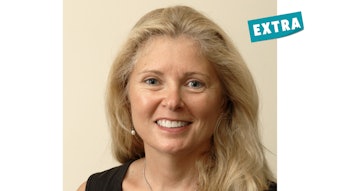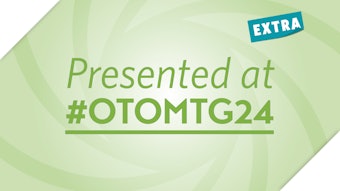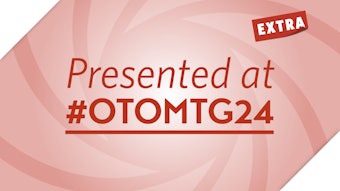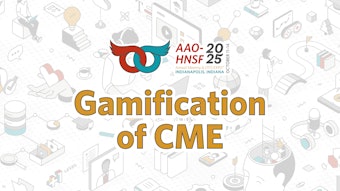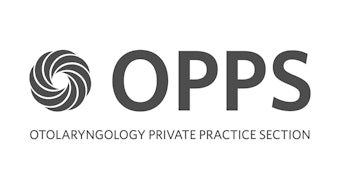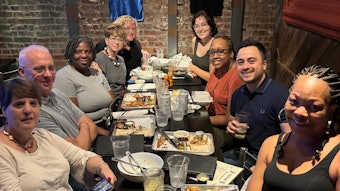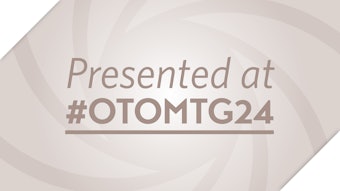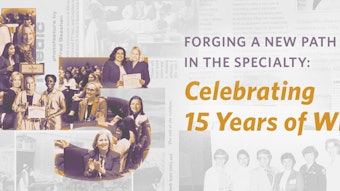Update on Barriers to CI Uptake in Adults
Although the field of cochlear implantation continues to advance, many patients still face barriers to access. Here, we provide a comprehensive and much-needed review.
Jonathan D. Neukam, AuD, Ansley J. Kunnath, BA, Ankita Patro, MD, René H. Gifford, PhD, David S. Haynes, MD, Janice J. Chung, MD, Aaron C. Moberly, MD, and Terrin N. Tamati, PhD, on behalf of the Implantable Hearing Devices Committee
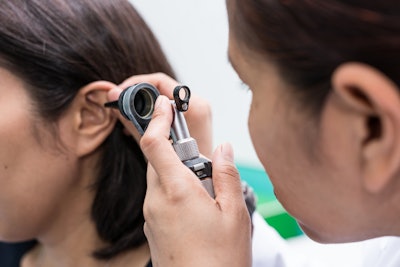
Although the barriers to hearing aid (HA) uptake are well documented,4 cochlear implantation presents unique challenges, such as concerns for lack of insurance reimbursement or out-of-pocket expenses, surgical considerations, and potentially greater uncertainty of outcome for surgical intervention. A thorough review of adult and pediatric barriers to cochlear implantation was written over 10 years ago, followed by a few opinion articles in recent years.5,6,7,8 This leaves a gap in our evidence base of up-to-date barriers to CI uptake.
Here, we provide an update on adult CI uptake barriers, based on our recent scoping review (in press). We utilize an ecological framework9,10,11 for the study of health behavior to organize barriers to CI uptake into multiple domains, including policy, societal, organizational, and individual barriers. We also propose strategies to improve access and outcomes for adults who could benefit from this transformative technology.
Policy and Structural Barriers
In the United States, non-Caucasians pursue CIs at lower rates despite qualifying for CIs more often. Furthermore, individual CI center cohorts across the United States do not represent the racial and ethnic distribution of their regions.12,13,14,15,6,16,17 Lower socioeconomic status (SES) and education level are related to lower CI uptake.18,19,20,21 As a field, we are disproportionately implanting more Caucasian patients and those from higher SES than any other groups. This is a complex problem that may be related to community healthcare access and SES, which are likely intertwined with race and ethnicity.
Globally, in countries with single-payer systems or universal healthcare (e.g. Australia, United Kingdom, Canada), financial budgets often restrict the number of CIs that can be performed, and country-specific eligibility criteria can also inhibit cochlear implantation.22,23,24,25,26,27,28 Despite having universal healthcare, countries such as Australia still find disparities among socioeconomic groups, suggesting that this barrier extends beyond insurance coverage to factors including the cost of travel to CI centers and/or the impact of surgery on attending work.29
Additionally, sociodemographic and racial underrepresentation creates biases in CI clinical research, impeding the generalization of rehabilitation studies to the general population. This issue further emphasizes the need for more research into the specific barriers faced by minority populations and patients from low socioeconomic backgrounds and the development of culturally competent solutions to ensure equitable access to CIs.30
Societal Barriers
Persistent misconceptions and a general lack of awareness about CIs present additional societal barriers to uptake. An examination of the public’s knowledge of CIs revealed common beliefs such as fully implantable CIs31 or the necessity for replacement of internal components every three to five years.32 These misconceptions may stem from reliance on the internet for knowledge rather than healthcare professionals29,33,31 Moreover, online information providing CI education was found to be written above a sixth-grade reading level, which is the recommended reading level by the American Medical Association.34,35 Educational materials like YouTube videos were often without the subtitles or interpreter services needed to be understood by individuals with hearing loss.36 Only 12% of the general population was found to be aware of CIs.37 Awareness is notably higher among young adults and Caucasian individuals, reflecting disparities in knowledge across demographic groups.
Organizational Barriers
At the organizational level, inconsistent referral criteria, challenges in candidate identification, and lack of professional resources are barriers to CI uptake. These issues may arise from a lack of professional resources, a limited number of CI centers in a region, or centers with audiologists who are not trained in CI programming. Inconsistent referral criteria have been reported by audiologists, as well as a lack of awareness among non-audiology professionals.38,39,40,41,42,30,43,32 A lack of referral from hearing healthcare and non-hearing healthcare professionals is one of the largest barriers to CI uptake. This issue may arise from audiologists not appropriately referring patients for a CI evaluation when a HA no longer provides sufficient benefit.44 One challenge is that aided speech recognition testing is not a standard test performed outside of the CI evaluation, which may be due to a lack of booth space, equipment, or appointment time for aided testing. Even if aided speech recognition testing is performed, some audiologists may not be trained on current expanded CI eligibility criteria which can include greater degrees of asymmetry between ears. Lack of testing materials, including speech recognition materials that have been developed for patients’ primary languages, can also result in the inability to test aided-speech perception, delaying the referral process, especially in minority populations.24
Lack of referrals also arises from other healthcare professionals. For example, most appointments with physicians occur face-to-face in a quiet room with visual cues, which can limit awareness of a patient’s degree of hearing loss.6 Thus, primary physicians may not screen for hearing loss issues as part of routine care, with insufficient evidence published that hearing screening is beneficial in adults who do not explicitly self-report hearing loss. Additionally, self-reporting of hearing loss is not a reliable indicator of actual hearing deficits.12 Lastly, some healthcare professionals may be unaware of expanded eligibility criteria for patients with less severe degrees of hearing loss or single-sided/asymmetric hearing loss.
Patients in rural areas face additional challenges accessing CI services due to the concentration of CI centers in urban areas.39,25,45,2,43 Although distance to CI centers has not been consistently identified as a barrier, patients who reside in rural areas must often travel longer distances to CI centers, leading to logistical difficulties such as time, cost, and transportation constraints.45,2,19 While some CI centers are optimizing patient travel time with same-day surgeries44,46 and overcoming fear of surgical complications by the use of local anesthetic,47 these options are not yet widely available. The recent rollout of remote programming options by some CI manufacturers may help to reduce travel burdens and improve access for rural populations. These advances may also foster avenues to bring CI technology to third-world nations where very little is known about CI uptake.
Interpersonal and Individual Barriers
At the patient level, barriers exist that are both interpersonal and individual. Marital status and living context (i.e., living alone versus living with another person) predict CI uptake, suggesting that a lack of strong social support systems may be a barrier.38,40,48,16 Establishing a network of existing CI recipients to answer questions and share experiences can positively impact CI pursuit.49,42 Additional individual barriers to CI uptake are strongly related to a patient’s values, beliefs, and fears. The potential risks of surgery and the inability to accurately predict postoperative hearing outcomes (such as speech recognition, sound quality, and preservation of residual hearing) based on preoperative evaluations pose significant decision-making challenges for CI candidates.50,49 Factors such as the self-perceived degree of hearing loss, experiences of hearing difficulty, social stigma associated with hearing loss, and aesthetic concerns further contribute to the limited uptake of CIs.42,26,28 Older age has also been found to play a negative role in the decision to pursue a CI.13,40,51
Summary and Future Directions
Despite the repeatedly demonstrated efficacy of CIs for patients with moderate-to-profound sensorineural hearing loss, as well as the ever-expanding indications of CIs to include individuals with SSD and asymmetric hearing losses, utilization rates of CIs remain low. Many adults have lingering trepidation and, on average, wait 24 to 30 years with hearing loss before cochlear implantation.13,39 Unfortunately, longer durations of deafness have been associated with worse speech recognition outcomes after cochlear implantation, underscoring the importance of early detection and intervention.52,53,54
Although the founding of the American Cochlear Implant Alliance has helped, there is still a significant need for CI advocacy and education. Social media has allowed CI users from diverse backgrounds and geographies to connect with others, but these avenues may be more popular amongst younger generations or those with greater technology access. Awareness campaigns have been used to increase CI awareness but with suboptimal results.55 Furthermore, CI information available on the internet may not be at an appropriate reading level.56,57 Improved use of social media to promote CI awareness, coupled with the formation of networks for existing CI recipients to share personal experiences, could help educate potential CI recipients and positively influence decision-making.
Recently, CI visibility has increased in film and television, which may also increase awareness among the general population. However, this could result in mixed attitudes and beliefs. For example, the 2019 film Sound of Metal portrayed CIs in a negative light by giving inaccurate information that the surgery is not covered by insurance. In contrast, Toy Story 4 (2019) demonstrated a pediatric CI user in a positive light. In A Quiet Place (2018), the use of a CI in combination with sign language brought to light the utility of CIs within different linguistic and cultural settings. Another undoubtedly impactful project was the 2020 release of an American Girl doll who is a CI recipient.
An enormous research gap worth highlighting is the disparity in CI utilization among racial and ethnic minority groups. In the United States, this population includes African American, Hispanic, Asian, or any non-Caucasian patients. However, because of the immense size of the country and variability across regions, minority health behavior may present itself differently depending on the area.58 Even less is known about rural and low SES populations who may or may not overlap with these minority profiles. Rural and remote communities often suffer from limited health resources.59 In addition, minority populations also include indigenous persons, cultural immigrants, religious minorities, and the LGBTQIA+ community. It is unknown how these populations are being served, but collecting thorough sociocultural data during patient intake may help clinicians identify key structural, interpersonal, and individual barriers.60 Incorporating these data into our research studies will help us gain a more nuanced understanding of these unique populations and promote culturally competent hearing health care overall.
Untreated hearing loss is associated with numerous adverse outcomes, including increased social isolation, loneliness, depression, risks to personal safety, and cognitive decline.61,62,63,64 Ultimately, the goal of hearing healthcare initiatives aimed at increasing CI access and uptake is to improve the quality of life for all individuals who could benefit from this technology. By identifying barriers and organizing them into an ecological framework, targeted interventions can be developed and implemented to overcome these challenges, ultimately optimizing communication outcomes for all who could benefit from this life-changing intervention.
References
- CMS. (2022). Decision Memo for Updated Cochlear Implantation Criteria. https://www.cms.gov/medicare-coverage-database/view/ncacal-decision-memo.aspx?proposed=N&NCAId=306
- Nassiri, AM, Holcomb, MA, Perkins, EL, Bucker, AL, Prentiss, SM, Welch, CM, Andresen, NS, Valenzuela, CV, Wick, CC, Angeli, SI, Sun, DQ, Bowditch, SP, Brown, KD, Zwolan, TA, Haynes, DS, Saoji, AA, & Carlson, ML (2022). Catchment Profile of Large Cochlear Implant Centers in the United States. Otolaryngol Head Neck Surg, 167(3), 545–551. https://doi.org/10.1177/01945998211070993
- Zhan, KY, Mazul, A, Kallogjeri, DL, & Buchman, CA (2024). Use of Diagnostic Audiology and Cochlear Implantation in the US. JAMA Otolaryngol Head Neck Surg, 150(4), 353–354. https://doi.org/10.1001/jamaoto.2023.4738
- Knoetze, M, Manchaiah, V, Mothemela, B, & Swanepoel, W (2023). Factors Influencing Hearing Help-Seeking and Hearing Aid Uptake in Adults: A Systematic Review of the Past Decade. Trends Hear, 27, 23312165231157255. https://doi.org/10.1177/23312165231157255
- Marinelli, JP, & Carlson, ML (2021). Barriers to Access and Health Care Disparities Associated With Cochlear Implantation Among Adults in the United States. Mayo Clin Proc, 96(3), 547–549. https://doi.org/10.1016/j.mayocp.2020.08.027
- Nassiri, AM, Marinelli, JP, Sorkin, DL, & Carlson, ML (2021). Barriers to Adult Cochlear Implant Care in the United States: An Analysis of Health Care Delivery. Seminars in Hearing, 42(4), 311–320. https://doi.org/10.1055/s-0041-1739281
- Sorkin, DL (2013). Cochlear implantation in the world’s largest medical device market: Utilization and awareness of cochlear implants in the United States. Cochlear Implants International: An Interdisciplinary Journal, 14, 4–12. https://doi.org/10.1179/1467010013Z.00000000076
- Williams, L (2019). Untreated severe-to-profound hearing loss and the cochlear implant situation: How policy and practice are disabling New Zealand society. N Z Med J, 132(1505), 73–78
- Kennedy, W, Fruin, R, Lue, A, & Logan, SW. (2021). Using Ecological Models of Health Behavior to Promote Health Care Access and Physical Activity Engagement for Persons With Disabilities. J Patient Exp, 8, 23743735211034031. https://doi.org/10.1177/23743735211034031
- McLeroy, KR, Bibeau, D, Steckler, A, & Glanz, K. (1988). An Ecological Perspective on Health Promotion Programs. Health Education Quarterly, 15(4), 351–377. https://doi.org/10.1177/109019818801500401
- Sallis, JF, Owen, N, & Fisher, EB (2008). Ecological models of health behavior. In Health behavior and health education: Theory, research, and practice, 4th ed. (pp. 465–485). Jossey-Bass
- Angara, P, Tsang, DC, Hoffer, ME, & Snapp, HA. (2021). Self-Perceived Hearing Status Creates an Unrealized Barrier to Hearing Healthcare Utilization. The Laryngoscope, 131(1), E289–E295. https://doi.org/10.1002/lary.28604
- Dornhoffer, JR, Holcomb, MA, Meyer, TA, Dubno, JR, & McRackan, TR. (2020). Factors Influencing Time to Cochlear Implantation. Otol Neurotol, 41(2), 173–177. https://doi.org/10.1097/mao.0000000000002449
- Hunter, JB, & Tolisano, AM. (2021). When to Refer a Hearing-impaired Patient for a Cochlear Implant Evaluation. Otol Neurotol, 42(5), e530–e535. https://doi.org/10.1097/MAO.0000000000003023
- Mahendran, GN, Rosenbluth, T, Featherstone, M, Vivas, EX, Mattox, DE, & Hobson, CE. (2022). Racial Disparities in Adult Cochlear Implantation. Otolaryngol Head Neck Surg, 166(6), 1099–1105. https://doi.org/10.1177/01945998211027340
- Patro, A, Lindquist, NR, Tawfik, KO, O’Malley, MR, Bennett, ML, Haynes, DS, Gifford, RH, Holder, JT, & Perkins, EL. (2022). A Five-Year Update on the Profile of Adults Undergoing Cochlear Implant Evaluation and Surgery-Are We Doing Better? Otol Neurotol, 43(9), e992–e999. https://doi.org/10.1097/MAO.0000000000003670
- Tolisano, AM, Schauwecker, N, Baumgart, B, Whitson, J, Kutz, JW, Jr., Isaacson, B., & Hunter, JB. (2019). Identifying Disadvantaged Groups for Cochlear Implantation: Demographicsfrom a Large Cochlear Implant Program. Ann Otol Rhinol Laryngol, 129(4), 347–354. https://doi.org/10.1177/0003489419888232
- Casazza, JA, Mitton, TJ, Yancey, KL, Whitson, JJ, & Hunter, JB. (2023). Racial and Ethnic Disparities Among Hearing Aid and Cochlear Implant Patients at a Tertiary-Level Academic Otology Practice. Otology & Neurotology, 44(5), E328–E332. https://doi.org/10.1097/MAO.0000000000003869
- Quimby, AE, Venkatesh, S, Corsten, M, McDonald, JT, Hwa, TP, Bigelow, DC, Ruckenstein, MJ, Johnson-Obaseki, S, & Brant, JA. (2023). Socioeconomic Status Among Cochlear Implant Candidates and Association With Surgical Pursuance. JAMA Otolaryngology-- Head & Neck Surgery, (Quimby A.E.; Hwa T.P.; Bigelow D.C.; Ruckenstein M.J.; Brant J.A.) Department of Otorhinolaryngology-Head&Neck Surgery, University of Pennsylvania, Philadelphia, United States(Venkatesh S.) currently a medical student at Perelman School of Medicine, Un. https://doi.org/10.1001/jamaoto.2023.2217
- Raine, C, Atkinson, H, Strachan, DR, & Martin, JM. (2016). Access to cochlear implants: Time to reflect. Cochlear Implants International: An Interdisciplinary Journal, 17, 42–46. https://doi.org/10.1080/14670100.2016.1155808
- Rapport, F, Lo, CY, Elks, B, Warren, C, & Clay-Williams, R. (2022). Cochlear implant aesthetics and its impact on stigma, social interaction and quality of life: A mixed-methods study protocol. BMJ Open, 12(3), e058406. https://doi.org/10.1136/bmjopen-2021-058406
- Crowson, MG, Chen, JM, & Tucci, D. (2017). Provincial Variation of Cochlear Implantation Surgical Volumes and Cost in Canada. Otolaryngology–Head and Neck Surgery, 156(1), 137–143. https://doi.org/10.1177/0194599816668325
- Fujiwara, RJT, Wong, EC, & Ishiyama, A. (2022). Geographic Variations in Medicare Cochlear Implantations in the United States. Otol Neurotol, 43(9), 1022–1026. https://doi.org/10.1097/mao.0000000000003660
- Greiner, RC, Rubinstein, JT, & Kohlberg, GD. (2023). Investigating Socioeconomic Barriers to Cochlear Implantation. Otology & Neurotology : Official Publication of the American Otological Society, American Neurotology Society [and] European Academy of Otology and Neurotology, (Greiner R.C.) University of Washington School of Medicine,(Rubinstein J.T.; Kohlberg G.D.). https://doi.org/10.1097/MAO.0000000000003985
- Lee, MS, Lin, VY, Mei, Z, Mei, J, Chan, E, Shipp, D, Chen, JM, & Le, TN. (2023). Examining the Spatial Varying Effects of Sociodemographic Factors on Adult Cochlear Implantation Using Geographically Weighted Poisson Regression. Otol Neurotol, 44(5), e287–e294. https://doi.org/10.1097/mao.0000000000003861
- Sims, S, Houston, L, Schweinzger, I, & Samy, RN. (2017). Closing the gap in cochlear implant access for African-Americans: A story of outreach and collaboration by our cochlear implant program. Current Opinion in Otolaryngology & Head and Neck Surgery, 25(5), 365–369. https://doi.org/10.1097/MOO.0000000000000399
- Sorkin, DL, & Buchman, CA. (2016). Cochlear Implant Access in Six Developed Countries. Otol Neurotol, 37(2), e161-4. https://doi.org/10.1097/MAO.0000000000000946
- Sturm, JJ, Brandner, G, Ma, C, Schvartz-Leyzac, KC, Dubno, JR, & McRackan, TR. (2023). Why Do Candidates Forgo Cochlear Implantation? Laryngoscope. https://doi.org/10.1002/lary.30721
- Cheung, LL, Fowler, A, Hassarati, RT, & Birman, CS. (2022). Distance and Socieoeconomic Status as Barriers to Cochlear Implantation. Otol Neurotol, 44(2), 134–140. https://doi.org/10.1097/MAO.0000000000003765
- Meinhardt, G, Sharrer, C, Perez, N, Downes, A, Davidowitz, T, Schuh, M, Robinson, L, Lustig, LR, & Bush, M. (2023). Reporting of Sociodemographic Data in Cochlear Implant Clinical Trials: A Systematic Review. Otol Neurotol, 44(2), 99–106. https://doi.org/10.1097/mao.0000000000003766
- D’Haese, PSC, De Bodt, M, Van Rompaey, V, & Van de Heyning, P. (2018). Awareness of Hearing Loss in Older Adults: Results of a Survey Conducted in 500 Subjects Across 5 European Countries as a Basis for an Online Awareness Campaign. Inquiry, 55, 46958018759421. https://doi.org/10.1177/0046958018759421
- Zhang, L, Ding, AS, Xie, DX, & Creighton, FX. (2022). Understanding Public Perceptions Regarding Cochlear Implant Surgery in Adults. Otol Neurotol, 43(3), e331–e336. https://doi.org/10.1097/MAO.0000000000003439
- Davis, AG, Hicks, KL, Dillon, MT, Overton, AB, Roth, N, Richter, ME, & Dedmon, MM. (2023). Hearing health care access for adult cochlear implant candidates and recipients: Travel time and socioeconomic status. Laryngoscope Investigative Otolaryngology, 8(1), 296–302. https://doi.org/10.1002/lio2.1010
- Illg, A, Bräcker, T, Batsoulis, C, Opie, JM, & Lesinski-Schiedat, A. (2021). CI decision making and expectations by older adults. Cochlear Implants Int, 23(3), 139–147. https://doi.org/10.1080/14670100.2021.2019522
- Looi, V, Bluett, C, & Boisvert, I. (2017). Referral rates of postlingually deafened adult hearing aid users for a cochlear implant candidacy assessment. Int J Audiol, 56(12), 919–925. https://doi.org/10.1080/14992027.2017.1344361
- Thomas, C, Westwood, J, & Butt, GF. (2021). Qualitative assessment of YouTube videos as a source of patient information for cochlear implant surgery. Journal of Laryngology and Otology, 135(8), 671–674. https://doi.org/10.1017/S0022215121001390
- Marinelli, JP, Sydlowski, SA, & Carlson, ML. (2022). Cochlear Implant Awareness in the United States: A National Survey of 15,138 Adults. Seminars in Hearing, 43(4), 317–323. https://doi.org/10.1055/s-0042-1758376
- Dillon, B, & Pryce, H. (2020). What makes someone choose cochlear implantation? An exploration of factors that inform patient decision making. Int J Audiol, 59(1), 24–32. https://doi.org/10.1080/14992027.2019.1660917
- Hixon, B, Chan, S, Adkins, M, Shinn, JB, & Bush, ML. (2016). Timing and Impact of Hearing Healthcare in Adult Cochlear Implant Recipients: A Rural-Urban Comparison. Otol Neurotol, 37(9), 1320–1324. https://doi.org/10.1097/MAO.0000000000001197
- Kato, MG, Kaul, VF, Hallak, D, Zhang, L, Moberly, AC, & Ren, Y. (2023). Why Do Cochlear Implant Candidates Defer Surgery? A Retrospective Case–Control Study. The Laryngoscope, n/a(n/a). https://doi.org/10.1002/lary.31254
- Lamb, B, Archbold, S, & Ng, ZY. (2023). Cochlear implants and deafness: A global case study to increase policy awareness and action on an under-resourced health issue. International Journal of Audiology. https://doi.org/10.1080/14992027.2023.2231634
- Looi, V, de Jongh, N, & Kelly-Campbell, R. (2023). From hearing aids to cochlear implants: The journey for private patients in New Zealand. Cochlear Implants Int, 24(3), 115–129. https://doi.org/10.1080/14670100.2022.2154426
- Shayman, CS, Ha, YM, Raz, Y, & Hullar, TE. (2019). Geographic Disparities in US Veterans’ Access to Cochlear Implant Care Within the Veterans Health Administration System. JAMA Otolaryngology-Head & Neck Surgery, 145(10), 889–896. https://doi.org/10.1001/jamaoto.2019.1918
- Nassiri, AM, Yawn, RJ, Gifford, RH, Holder, JT, Stimson, CJ, Eavey, RD, & Haynes, DS. (2020). Same-Day Patient Consultation and Cochlear Implantation: Innovations in Patient-Centered Health Care Delivery. Otology & Neurotology: Official Publication of the American Otological Society, American Neurotology Society [and] European Academy of Otology and Neurotology, 41(2), e223–e226. https://doi.org/10.1097/MAO.0000000000002478
- Marinelli, JP, Nassiri, AM, Lohse, CM, Driscoll, CLW, Neff, BA, & Carlson, ML. (2023). Effect of a Global Pandemic on Adult and Pediatric Cochlear Implantation across the United States. Otol Neurotol, 44(2), 148–152. https://doi.org/10.1097/MAO.0000000000003778
- Patro, A, Haynes, DS, & Perkins, EL. (2022). Same-Day Patient Consultation and Cochlear Implantation: Patient Experiences and Barriers to Implementation. Otol Neurotol, 43(8), e820–e823. https://doi.org/10.1097/MAO.0000000000003627
- Connors, JR, Deep, NL, Huncke, TK, & Roland, JTJ. (2021). Cochlear Implantation Under Local Anesthesia With Conscious Sedation in the Elderly: First 100 Cases. The Laryngoscope, 131(3), E946–E951. https://doi.org/10.1002/lary.28853
- Mangan, AR, Davis, KP, Anzalone, CL, Saadi, RA, Dornhoffer, JL, & King, DL. (2022). Assessing Patient Barriers to Cochlear Implantation. Otol Neurotol, 43(10), e1090–e1093. https://doi.org/10.1097/MAO.0000000000003702
- Bierbaum, M, McMahon, CM, Hughes, S, Boisvert, I, Lau, AYS, Braithwaite, J, & Rapport, F. (2020). Barriers and Facilitators to Cochlear Implant Uptake in Australia and the United Kingdom. Ear Hear, 41(2), 374–385. https://doi.org/10.1097/AUD.0000000000000762
- Balachandra, S, Tolisano, AM, Qazi, S, & Hunter, JB. (2021). Self-Identified Patient Barriers to Pursuit of Cochlear Implantation. Otol Neurotol, 42(10S), S26–S32. https://doi.org/10.1097/MAO.0000000000003376
- Turunen-Taheri, SK, Edén, M, Hellström, S, & Carlsson, PI. (2019). Rehabilitation of adult patients with severe-to-profound hearing impairment – why not cochlear implants? Acta Oto-Laryngologica, 139(7), 604–611. https://doi.org/10.1080/00016489.2019.1607976
- Blamey, P, Artieres, F, Başkent, D, Bergeron, F, Beynon, A, Burke, E, Dillier, N, Dowell, R, Fraysse, B, Gallégo, S, Govaerts, PJ, Green, K, Huber, AM, Kleine-Punte, A, Maat, B, Marx, M, Mawman, D, Mosnier, I, O’Connor, AF, … Lazard, DS. (2013). Factors affecting auditory performance of postlinguistically deaf adults using cochlear implants: An update with 2251 patients. Audiol Neurootol, 18(1), 36–47. https://doi.org/10.1159/000343189
- Goudey, B, Plant, K, Kiral, I, Jimeno-Yepes, A, Swan, A, Gambhir, M, Büchner, A, Kludt, E, Eikelboom, RH, Sucher, C, Gifford, RH, Rottier, R, & Anjomshoa, H. (2021). A MultiCenter Analysis of Factors Associated with Hearing Outcome for 2,735 Adults with Cochlear Implants. Trends Hear, 25, 23312165211037525. https://doi.org/10.1177/23312165211037525
- Zhao, EE, Dornhoffer, JR, Loftus, C, Nguyen, SA, Meyer, TA, Dubno, JR, & McRackan, TR. (2020). Association of Patient-Related Factors With Adult Cochlear Implant Speech Recognition Outcomes: A Meta-analysis. JAMA Otolaryngol Head Neck Surg, 146(7), 613–620. https://doi.org/10.1001/jamaoto.2020.0662
- D’Haese, PSC, Van Rompaey, V, De Bodt, M, & Van de Heyning, P. (2020). Can a Digital Awareness Campaign Change Knowledge and Beliefs Regarding Cochlear Implants? A Study in Older Adults in 5 European Countries. Inquiry, 57, 46958020910566. https://doi.org/10.1177/0046958020910566
- Nix, E, Willgruber, A, Rawls, C, Kinealy, BP, Zeitler, D, Schuh, M, & Bush, M. (2023). Readability and Quality of English and Spanish Online Health Information about Cochlear Implants. Otology & Neurotology, 44(3), 223–228. https://doi.org/10.1097/MAO.0000000000003791
- Seymour, N, Lakhani, R, Hartley, B, Cochrane, L, & Jephson, C. (2015). Cochlear implantation: An assessment of quality and readability of web-based information aimed at patients. Cochlear Implants Int, 16(6), 321–325. https://doi.org/10.1179/1754762815Y.0000000015
- Saint Onge, JM, & Krueger, PM. (2017). Health Lifestyle Behaviors among U.S. Adults. SSM Popul Health, 3, 89–98. https://doi.org/10.1016/j.ssmph.2016.12.009
- Matthews, KA, Croft, JB, & Liu, Y. (2017). Health-Related Behaviors by Urban-Rural County Classification—United States, 2013. MMWR Surveill Summ, 66, 1–8. https://doi.org/10.15585/mmwr.ss6605a1
- Clark, EK, & Koenig, AL. (2023). Affirming Practices With LGBTQIA+ Patients Seeking Speech and Hearing Care. Ear and Hearing, 44(5), 949–954. https://doi.org/10.1097/aud.0000000000001373
- Li, CM, Zhang, X, Hoffman, HJ, Cotch, MF, Themann, CL, & Wilson, MR. (2014). Hearing impairment associated with depression in US adults, National Health and Nutrition Examination Survey 2005-2010. JAMA Otolaryngol Head Neck Surg, 140(4), 293–302. https://doi.org/10.1001/jamaoto.2014.42
- Lin, FR, & Ferrucci, L. (2012). Hearing loss and falls among older adults in the United States. Archives of Internal Medicine, 172(4), 369–371. https://doi.org/10.1001/archinternmed.2011.728
- Shukla, A, Harper, M, Pedersen, E, Goman, A, Suen, JJ, Price, C, Applebaum, J, Hoyer, M, Lin, FR, & Reed, NS. (2020). Hearing Loss, Loneliness, and Social Isolation: A Systematic Review. Otolaryngology-Head and Neck Surgery: Official Journal of American Academy of Otolaryngology-Head and Neck Surgery, 162(5), 622–633. https://doi.org/10.1177/0194599820910377
- Yeo, BSY., Song, HJJ MD, Toh, EMS, Ng, LS, Ho, CSH, Ho, R., Merchant, RA, Tan, BKJ, & Loh, WS. (2023). Association of Hearing Aids and Cochlear Implants With Cognitive Decline and Dementia: A Systematic Review and Meta-analysis. JAMA Neurology, 80(2), 134–141. https://doi.org/10.1001/jamaneurol.2022.4427
